[javascript protected email address]
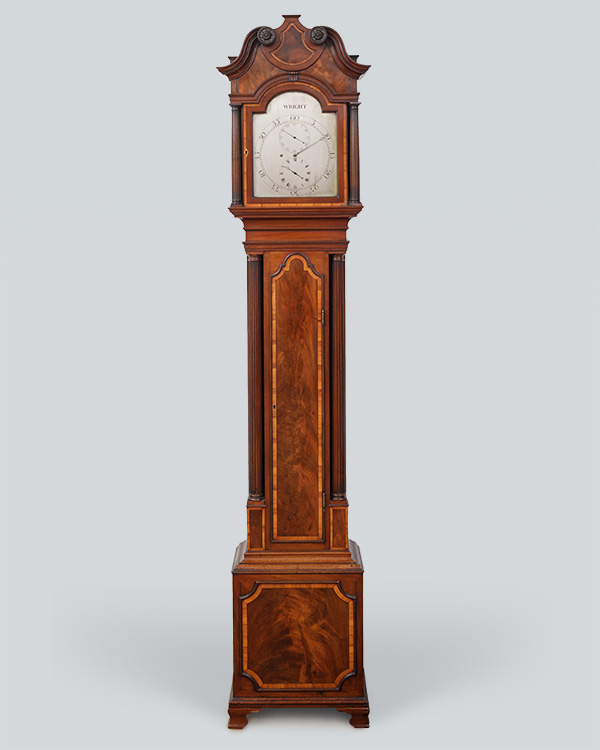
Thomas Wright, London

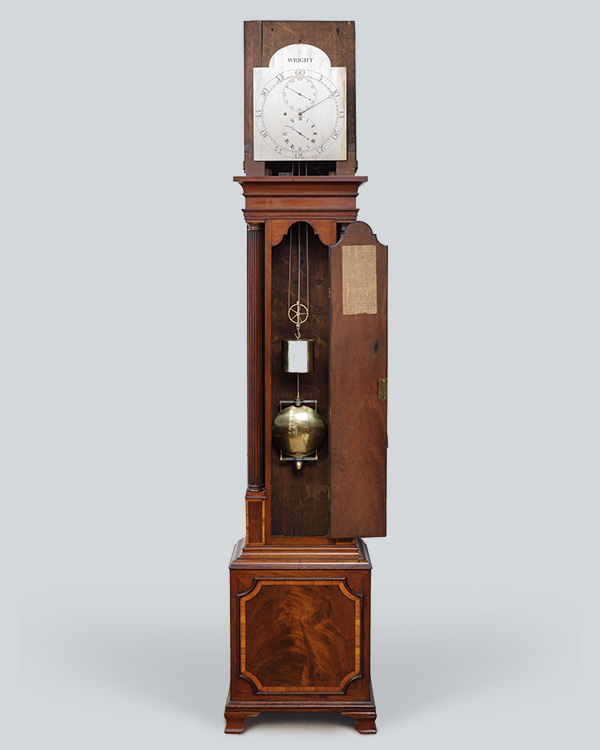
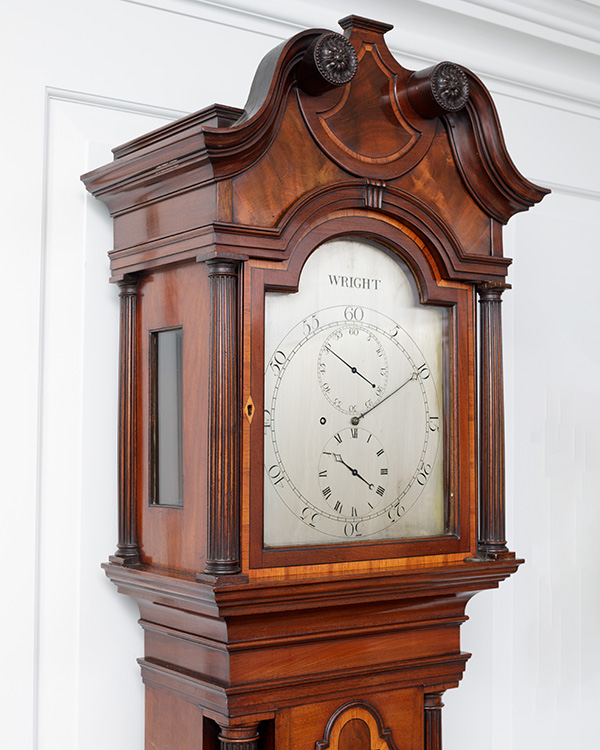
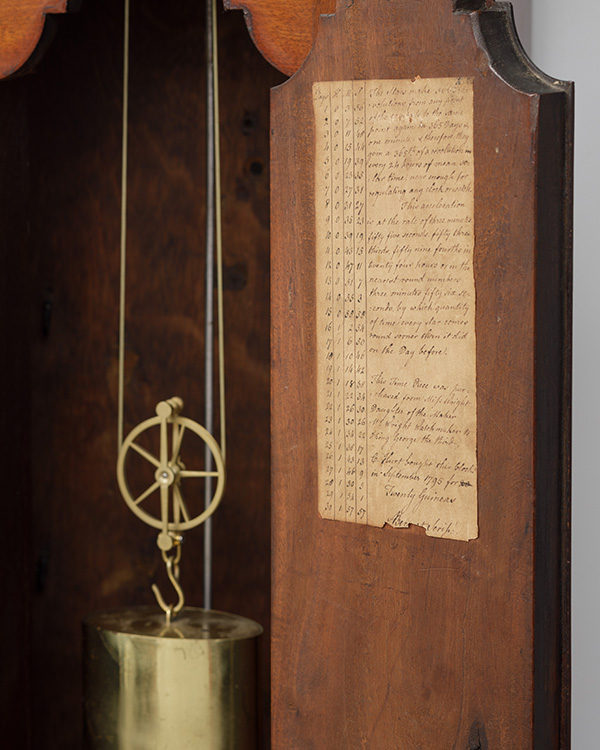
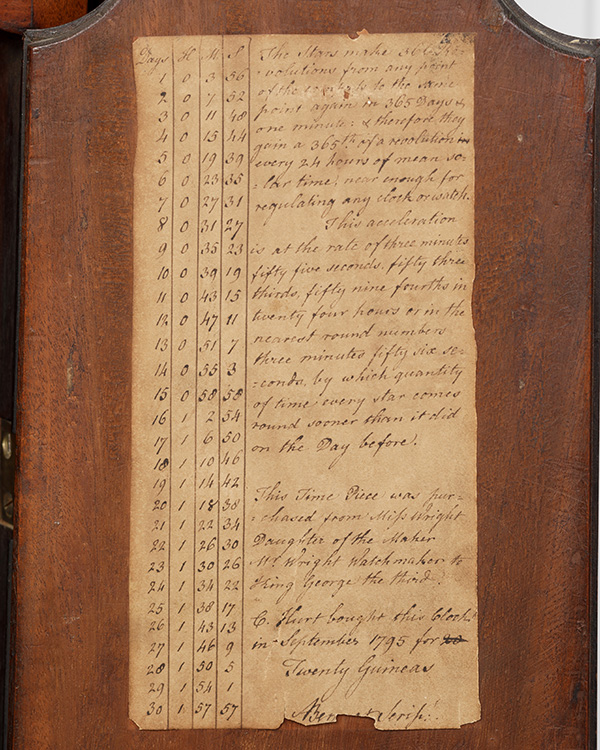
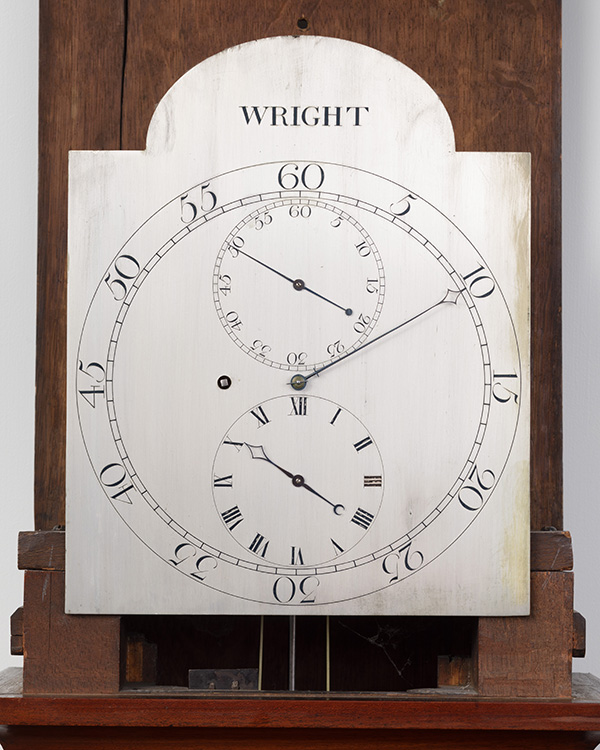
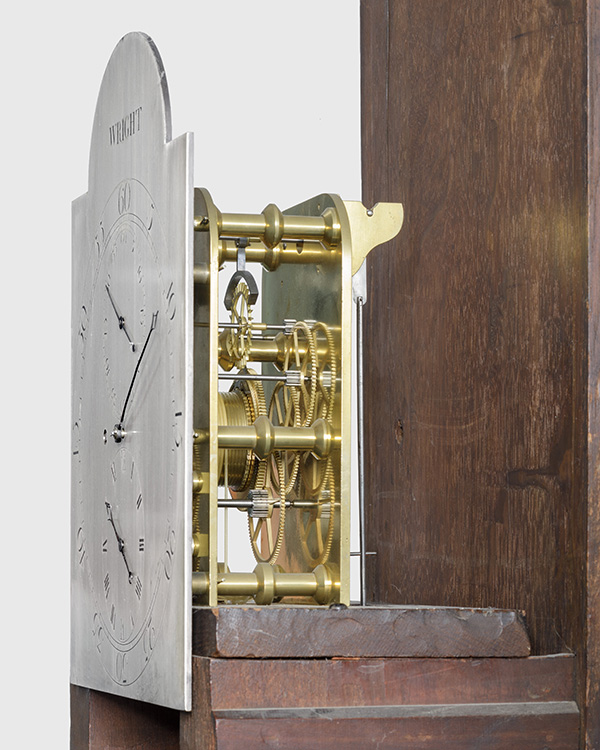
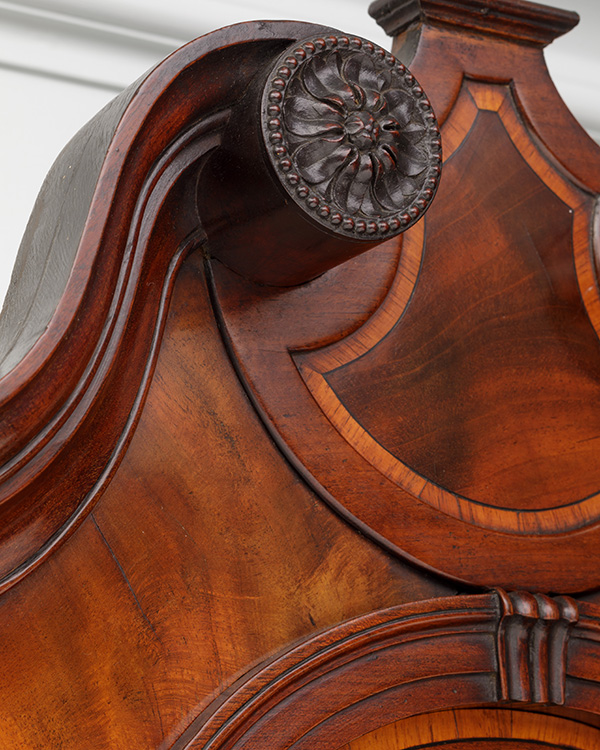
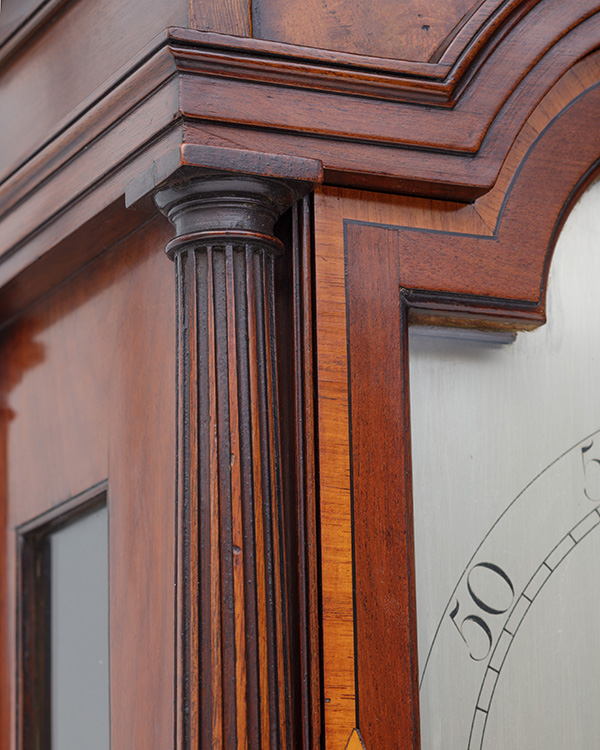
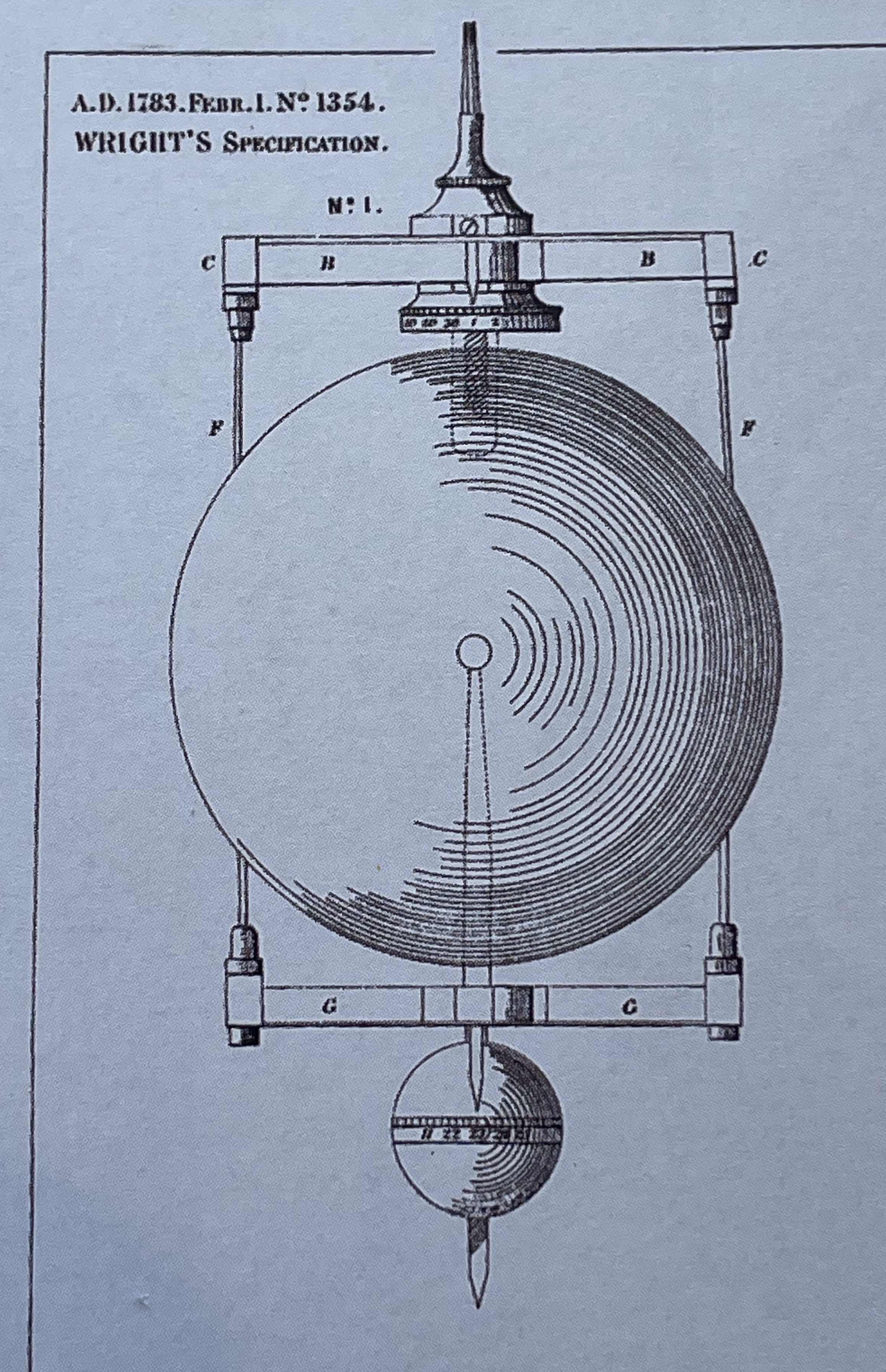
Circa 1785
Sold
7ft 1 inch high
A very fine month duration mahogany, oak and satinwood longcase regulator. CASE The well-proportioned and beautifully constructed architectural case has four cabriole feet supporting a plinth which is fronted by a raised hollow-cornered panel with satinwood banding, the narrow elegant trunk is flanked on either side by two shapely free-standing fluted columns and centred by a slander ogee-arched door with satinwood banding, the inside of which bears a pasted note inscribed in ink as follows: The stars make 36 revolutions from any point in the universe to the same point again in 365 days & one minute and therefore they gain a 365th of a revolution in every 24 hours of mean solar time, near enough for regulating any clock or watch. This acceleration is at the rate of three minute and fifty-five seconds, fifty three thirds, fifty nine fourths, in twenty four hours or in the nearest round number three minutes fifty six seconds, by which quantity of time every star comes round sooner than it did on the day before. This timepiece was purchased from Miss Wright, daughter of the maker Mr. Wright Watchmaker to the King George the third. G. Hurt bought this clock in September 1795 for twenty guineas. The hood is similarly flanked by free-standing fluted columns supporting a quoined break arch beneath an elegant swan-neck pediment embellished with finely carved rosette terminals. DIAL The 10-inch silvered brass dial is signed WRIGHT in the arch above the regulator chapter rings with outer Arabic minutes, roman hours and Arabic seconds ring, all with the original delicate blued steel hands. MOVEMENT The movement has thick brass arched plates which are conjoined by six baluster pillars, the delicate wheel train has five crossings to each wheel and the train terminates with a Graham-style deadbeat escapement with a pivoted anti-friction crutch piece; the steel-rod pendulum is of unique design with a large brass-faced lead bob sandwiched by two bimetal bars which are conjoined by iron rods through the bob, adjusted at the top bar by turning a calibrated disc and with fine adjustment ball at the base of the pendulum; with the original ovoid brass-cased lead weight and crank winding key. Illustrated in; R.W. Symonds, A Book of English Clocks, King Penguin, 1947, p. 79, pls. 68B & 70 About this Regulator This wonderful, elegant longcase regulator has the very rare and enviable combination of precision timekeeping matched best quality cabinetmaking. The case has wonderful slender proportions with excellent colour veneer, the beautifully carved columns flanking the narrow trunk door serve to accentuate the almost feminine appeal of this clock. This was almost certainly Thomas Wright''s own regulator which he may well have kept in his house rather than at the shop. There is no reason to believe that the label pasted on the inside of the trunk door declaring that the clock was sold for 20 guineas by Wright''s daughter in 1795 is anything other than fact. THOMAS WRIGHT BIOGRAPHY Thomas Wright was made free of the Clockmakers'' Company in 1770 and died in 1792. An ingenious and successful clock and watchmaker he was much favoured by King George III and given the Royal Warrant ''Watchmaker to the King''. A table clock by Wright in the Royal Collection with an ormolu and Blue John case by Matthew Boulton is illustrated in Cedric Jagger, Royal Clocks, 1983, p.98, pl.134. His influence and high regard is clearly demonstrated by the fact that it was Thomas Wright that Thomas Earnshaw turned to to show his designs for his new spring detent escapement in 1781. Wright commissioned Earnshaw to make a watch employing the escapement and this Earnshaw did in two days. Wright then spent the next year testing the watch which sadly appears not to have survived. After protracted negotiations regarding the possibility of Wright patenting the new escapement they came to an arrangement whereby Earnshaw would make watches for any makers who desired them and charge, in addition to the cost of the watch, one guinea payable to Thomas Wright to cover the cost of taking out the patent, which was at that time about £100. The patent, dated February 1st 1783, number 1354, displays not only the spring detent but also the drawings and description for the ingenious and handsome pendulum employed on the present regulator. PATENT DETAILS The patent reads as follows: B an horizontal bar the upper side of which is made of steel or iron and the lower side of copper, zinc & silver or brass compounded with other metals so as to have the property of expanding more than the upper side and the two metals being fastened together by solder screws or rivets will when worn raise the ends at C.C. and when cooled the contrary which will raise the rods F.F. which are fastened to the ends of the crossbars C.C. and pass loose thro'' the Ball and at the lower end are fastened to the crossbow G.G. which is compounded like the upper only the upper side is the most expansive metal and when it receives a greater degree of heat becomes raised in the middle wherein is fixed a piece of steel of other metal which passes up to the centre of the Ball which rests on it so that as the pendulum Rod expands or becomes longer the Ball of the pendulum is by means of the two crossbars B.B. G.G. raised in the same proportions so that in all degrees of heat and cold pendulum remains the same length.
